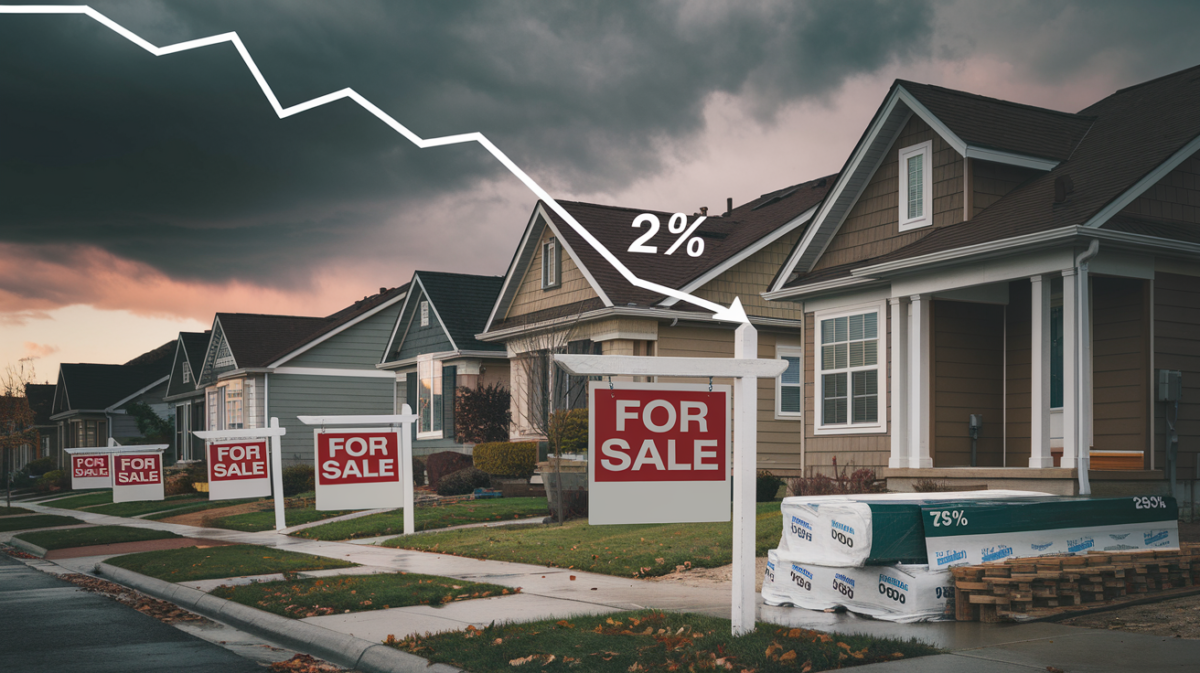Market Activity Slumps Despite Rising Inventory Levels
The American housing market experienced a significant downturn in June 2025, with existing home sales declining by 2.7% to reach a seasonally adjusted annual rate of 3.93 million units. This represents the lowest sales level recorded since September 2024, according to data released by the National Association of Realtors.
The decline comes at a time when the housing market faces multiple headwinds, including persistently high mortgage rates hovering around 7% and ongoing economic uncertainties that continue to challenge both buyers and sellers across the nation.
Record-Breaking Prices Compound Affordability Crisis
Despite falling sales volumes, home prices continued their relentless climb, with the median existing-home price reaching an all-time high of $435,300 in June. This represents a 2% increase from the same period in 2024, highlighting the persistent disconnect between market demand and housing affordability.
The price surge reflects the ongoing supply constraints that have plagued the housing market for years. Limited housing inventory, combined with construction challenges and rising material costs, has created an environment where prices continue to rise even as buyer activity weakens.
Key Market Indicators for June 2025:
- Existing home sales: 3.93 million units (seasonally adjusted annual rate)
- Monthly decline: 2.7%
- Median home price: $435,300 (record high)
- Year-over-year price increase: 2%
- Available inventory: 1.53 million units
- Months of supply: 4.7 months
Inventory Increases But Fails to Stimulate Sales
One bright spot in the market data shows inventory levels rising significantly. At the end of June, available housing inventory stood at 1.53 million units, marking a substantial 15.9% increase compared to the previous year. This translates to a 4.7-month supply at the current sales pace.
However, this increased inventory has not translated into higher sales activity, suggesting that affordability concerns and high borrowing costs are preventing potential buyers from entering the market. The disconnect between rising inventory and falling sales indicates deeper structural issues affecting housing market dynamics.
Mortgage Rates Create Significant Barriers
High mortgage rates continue to serve as the primary obstacle for prospective homebuyers. With rates maintaining levels around 7%, many potential buyers have been priced out of the market or are choosing to delay their home purchases in hopes of more favorable financing conditions.
The National Association of Realtors provided insights into the potential impact of rate reductions, estimating that if mortgage rates were to decrease to 6%, approximately 160,000 renters could transition into first-time homeowners. This projection underscores how sensitive the current market is to even modest changes in borrowing costs.
Regional Performance Varies Across the Country
The housing market slowdown affected different regions with varying intensity. The Northeast experienced the most significant impact, with existing home sales dropping by 8% during June. The Midwest followed with a 4% decline, while the South saw a more modest decrease of 2.2%.
Notably, the West bucked the national trend, reporting a 1.4% increase in sales activity. This regional variation highlights how local economic conditions, inventory levels, and price points can influence market performance differently across geographic areas.
Regional Sales Performance Comparison:
| Region | Sales Change (%) | Performance |
|---|---|---|
| Northeast | -8.0% | Steepest decline |
| Midwest | -4.0% | Significant decrease |
| South | -2.2% | Moderate decline |
| West | +1.4% | Only region with growth |
Construction Industry Faces Additional Pressures
The housing market’s challenges extend beyond sales and pricing to the construction sector, which faces rising material costs and regulatory uncertainties. Proposed tariffs on essential construction materials including steel, aluminum, and copper could potentially inflate construction expenses by up to 10%, depending on specific materials and regional factors.
These cost pressures have contributed to what industry observers describe as the weakest spring sales season since 2019. Survey data indicates that 71% of builders characterized market conditions as “slow,” reflecting widespread challenges across the residential construction industry.
Industry Responses and Market Outlook
Despite current challenges, industry participants continue to seek solutions to stimulate market activity. Some builders have responded by offering mortgage rate buydowns to help offset high borrowing costs for potential buyers. Additionally, there are ongoing efforts to develop more affordable housing options to address the growing affordability gap.
However, these initiatives have yet to significantly impact overall market performance, as fundamental issues related to interest rates, construction costs, and housing supply continue to constrain market activity.
Looking Forward: Market Implications
The June housing data reveals a market caught between conflicting forces. While increased inventory suggests some easing of supply constraints, high mortgage rates and elevated prices continue to limit buyer participation. This dynamic creates a challenging environment for both sellers, who may face longer marketing times and fewer offers, and buyers, who confront affordability barriers.
Market participants will be closely watching future interest rate trends and their potential impact on housing demand. Any significant movement in mortgage rates could potentially shift the current market equilibrium and influence both sales volumes and pricing dynamics in the months ahead.
The current housing market conditions reflect broader economic uncertainties and monetary policy impacts that extend well beyond real estate. As the market navigates these challenges, the coming months will likely provide crucial insights into the resilience and adaptability of American housing demand.







